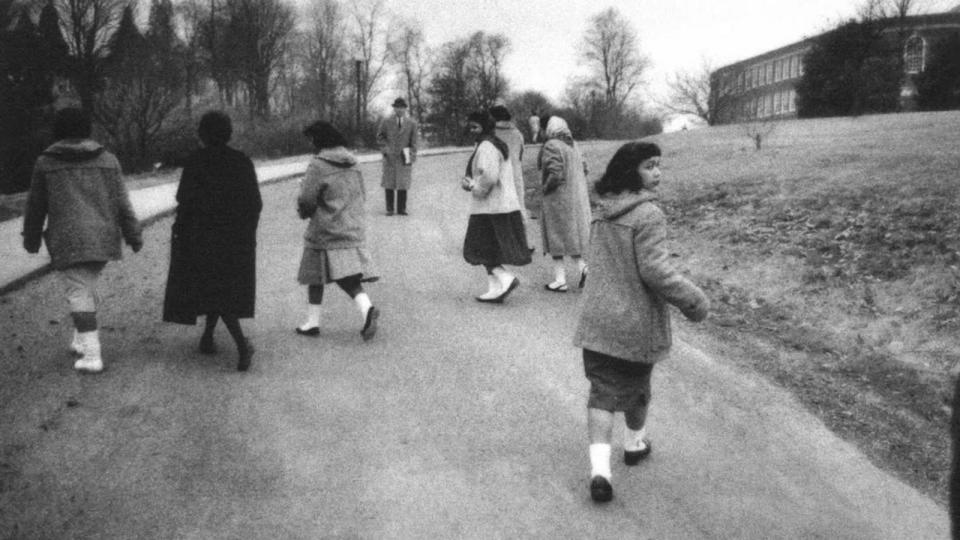Former student shares memories of school integration fight 70 years ago
A Virginia woman who was at the forefront of school desegregation is sharing her experiences, and the hatred she endured, 65 years later.
In February 1959, then-14-year-old Betty Kilby stepped into the history books as one of the 21 Black students who first attended her formerly segregated local high school, responding to the U.S. Supreme Court's unanimous Brown v. Board of Education decision fewer than five years earlier declaring "separate but equal" to be unconstitutional, paving the way for the racial integration of public schools in America.

On their radios and televisions at home, Kilby and her friends heard parents and governors say that what they were doing was wrong. James Lindsay Almond Jr., the governor of Virginia at the time, said that the integration and mixing of the races in Virginia would "absolutely destroy public education."
Kilby, now a civil rights activist and author, remembers everything about that day in February nearly 70 years ago outside Warren County High School in northern Virginia. She recalls how tightly she held on to her clipboard, how cold it was, and how cold they were.
"They told us not to look at the people, not to look at the crowd, to remain focused on going up the hill," Kilby recalled. "The memory of going up that hill will never cease from my brain. I could hear the racial slurs. We just thought that that would be the day that we died."
During her senior year, Kilby said she was walking alone when a group of white students pulled her into a room.
MORE: 70 years after Brown v. Board of Education, many schools remain segregated: Data analysis
"And as I cross the auditorium one day, I was grabbed," Kilby said, becoming emotional at the memory. "And I was raped. And at that point I begged God to take me home."
Yet Kilby told no one then about what had happened, saying that if she'd told her father, "he would have probably tried to kill somebody."
Many people believe that the Supreme Court's May 17, 1954 decision to integrate American schools involved just one case from Topeka, Kansas. But it was actually a combination of fights from across the country – including one from Virginia.
Today, surviving students of what was then Moton High School, a segregated Black school in northern Virginia, celebrate their walkout that led to one of the lawsuits.
"We had no library. We had no cafeteria, we had no science lab," said former student Joan Cobbs. "Also we had hand-me-down books from the white school. And they were tattered and torn. So, what happened is we went out on a strike for two weeks."
Over 60 years later, their story caught the attention of a group of talented Virginia high school students, who produced an award-winning documentary about it.
The students learned how the Black students stayed safe by organizing their schedules so they could walk together between classes. They also heard about the principals and teachers who refused to even say hello.
"It's one thing to read about history in a textbook, but when that person who made that history is standing in front of you, that really just gives you a deeper passion to share that history," said student filmmaker Elizabeth Kidd.
"We can't forget the lessons of the past if we want to make change for the future," added fellow student filmmaker Pria Dua.
The former segregated Moton High School, where the students walked out in the 1950s, is now a museum.
"Children paid the price. I paid the price," said Kilby, remembering that time, more than two generations ago. "I gave up my innocence to integrate these schools. Not because we wanted better. We wanted the same."
Former student shares memories of school integration fight 70 years ago originally appeared on abcnews.go.com

